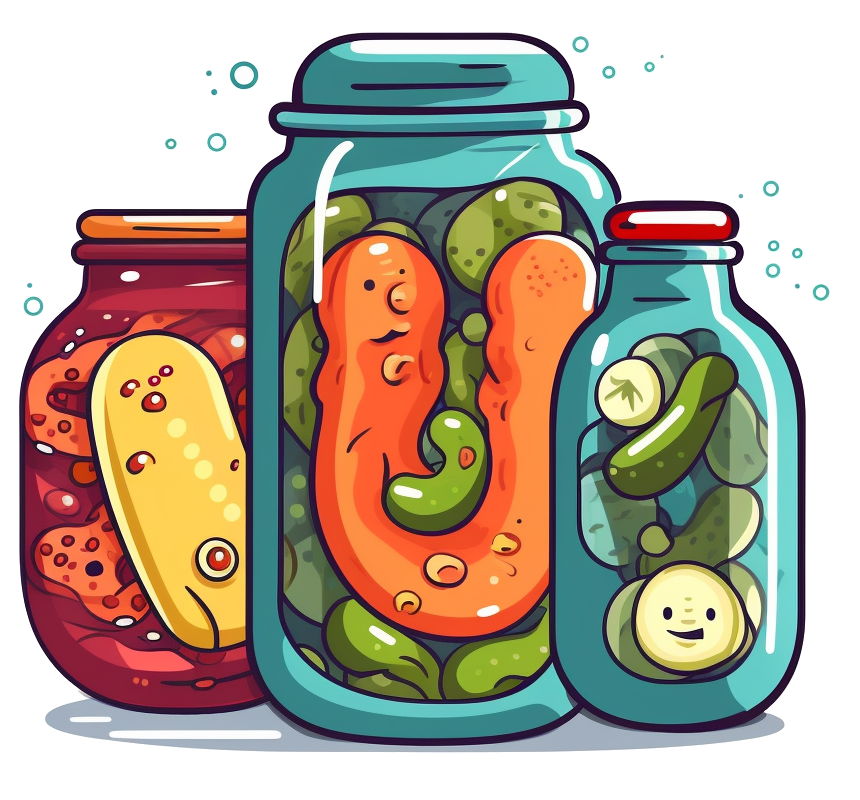I’m thinking mostly of turşu (torshi) and kimchi.
Traditionally, these vegetables are able to ferment fully sealed for weeks, months, or even years. My family ferments turşu for 6 weeks and they fill that bottle to the brim with no problem. But I have seen many reports of people doing European style fermentation who have popped lids and made a mess because they didn’t “burp” the jar.
So what is the difference that makes them not need to release pressure? Can they be made in a metal lid mason jar?
Also, there is vinegar in turşu solution - anywhere from 10% to 50% volume depending on the recipe. Some recipes boil the solution before adding to the jar. I have read many people say both vinegar and boiling will kill your culture, but I have seen both done and they definitely work. Any insights on this?


Few things could be going on, after all, this is very much an inexact science.
That first recipe is way too acidic (~1.66% acetic acid) - so it is likely not getting a wild fermentation. The 2nd may be relying on the swing top jars to vent, and the 3rd is playing russian roulette with the mason jars. I may just be overly cautious when it comes to fermenting in sealed glassware, but I have seen way too many gore pic on homebrewing forums because of glassware exploding and slicing people open
I’m sorry to doubt you, but it will certainly ferment with a 1:3 ratio of grape/acid vinegar to distilled water, even with lemon juice added. We usually do less than that (10-20%), but it’s not too much to work.
I have seen plenty of those videos and that’s what made me wonder why it’s not a concern for these traditional recipes. All I can say is, the jars in that third recipe are very common to see in Turkey and no one burps them, nor do we have exploding turşu jars. I think the other poster is right that that type of screw lid may not be fully airtight. But I assure you, it’s not a concern for anyone making fermented turşu.
This is why I was curious. It seems it’s a different technique which is relatively unknown outside the near east and west Asia. I have to assume slower fermentation (possibly due to the vinegar and hot solution, as you suggest) is a big part of it. Also, most recipes will only ferment for 2 to 6 weeks.
While yes, you can still get some fermentation at these low pHs, it will be insignificant compared to what you would see starting at a higher pH, which is probably why some of these recipes are fine with you leaving it sealed in a mason jar. Lactobacillus’ lower tolerance to pH is around 3, and it dies outright at a pH of 2 (with some variance by species). Vinegar (5% acetic acid) has a pH of 2.4, and at a 33% dilution and 10% dilution you are looking at pH values around 2.65 and 2.9. If i pitched a pure lactobacillus culture in a vessel of wort (beer) and held it at ~100-110F (ideal temp) until it fully stopped fermenting, it would stall out on its own before it dipped below 2.9. It’s possible that the chickpeas may be added to increase the pH of the solution? or that other vegetables act as an acid buffer in the solution?
Every time I’ve had tursu it has been very acetic acid forward. If you want a strong fermented (lactic acid) flavor instead, I would follow that 2nd recipe you posted above (the one that lists a vinegar as optional), but I would reduce the 1:10 dilution to a tablespoon per liter of water - if the final product is missing the acetic acid flavor you can always add more vinegar after fermentation